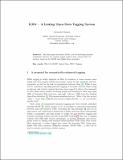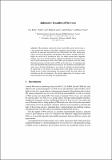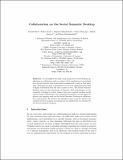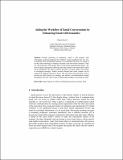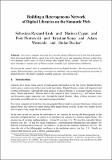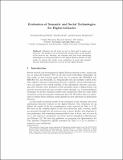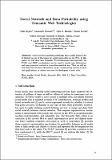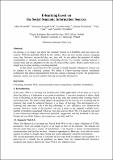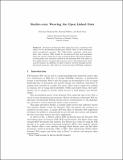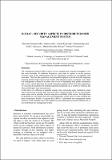Search
Now showing items 1-10 of 72
LODr - A Linking Open Data Tagging System
(CEUR-WS.org, 2008)
This demo paper introduces LODr, a service providing semantic enrichment features for existing tagged content from various Web 2.0
services, based on the MOAT and Linked Data principles.
Automatic Location of Services
(2005)
The automatic location of services that fulfill a given need is seen as a key step towards dynamic and scalable integration. In this paper we present a model for the automatic location of services that considers the static ...
Collaboration on the Social Semantic Desktop
(2007)
To accomplish the daily work people use several desktop applications
to collaborate with co-workers. Each application is specialized
on a specific domain, such as document management, email, or time planning.
Although ...
Aiding the Workflow of Email Conversations by Enhancing Email with Semantics
(2007)
Despite persisting in popularity, email is still plagued with
information overload, hindering the workflow of data handled by the user. Just
as Semantic Web technologies promise to revolutionize the Web, we aspire to
use ...
Building a Heterogeneous Network of Digital Libraries on the Semantic Web
(2006)
Ever since computer networks have become popular libraries tend to join into federations.
Each federated digital library, apart from delivering discovery and navigation features within their
own database allows users to ...
Evaluation of Semantic and Social Technologies for Digital Libraries
(2008)
Libraries are the tools we use to learn and to answer our
questions. The quality of our work depends, among others, on the quality
of the tools we use. Recently, the semantic web and social networking
technologies are ...
Social Networks and Data Portability using Semantic Web technologies
(2008)
Social network and data portability has recently gained a lot
of interest as one of the issues for social media sites on the Web. In this
paper, we will show how Semantic Web technologies and especially the
FOAF and ...
E-learning based on the Social Semantic Information Sources
(2006)
E-Learning is no longer just about the materials burned on CD-ROMs and sent across the country. With the potential offered by the Internet, there are new on-line courses emerging every day. However successful they are, ...
Sindice.com: Weaving the open linked data
(2007)
Developers of SemanticWeb applications face a challenge with respect to the decentralised publication model: where to find statements about encountered resources. The linked data" approach, which man- dates that resource ...
D-FOAF - Security Aspects in Distributed User Management System
(IEEE, 2005)
The contemporary Internet offers various services ranging from electronic newspapers to on- line social networks. To authorize themselves, users have to register to on-line services. However, most of the ...

